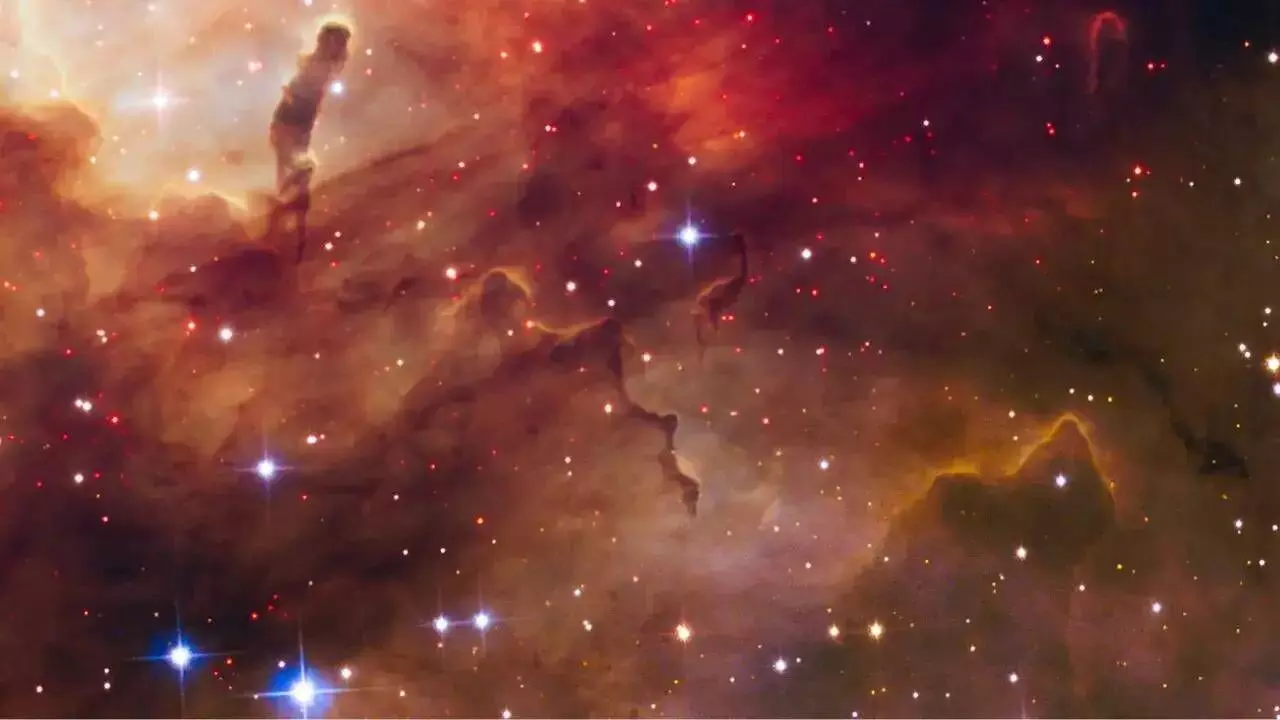NASA’s Hubble Space Telescope Captures 6 Breathtaking Images of Westerlund 2
NASA’s Hubble Telescope captures 6 stunning images of Westerlund 2, revealing baby stars, gas pillars, and a glowing galactic cluster in vivid detail.
image for illustrative purpose

NASA’s Hubble Space Telescope has once again delivered a stunning glimpse into the cosmos—this time with six spectacular images of Westerlund 2, one of the most luminous star clusters in our galaxy. These awe-inspiring photographs celebrate the sheer beauty and complexity of the universe, from glowing gas pillars to newly forming stars hidden in cosmic dust.
Here’s a closer look at these remarkable images of Westerlund 2, a stellar nursery located in the constellation Carina, roughly 20,000 light-years from Earth.
🌌 1. A Celestial Showcase: Westerlund 2 in Full Glory
This composite view of Westerlund 2 highlights its dense core and radiant surroundings. Captured using Hubble’s Advanced Camera for Surveys and Wide Field Camera 3, the image reveals newborn stars, glowing clouds of gas, and the sheer scale of the star cluster.
Image Credit: NASA, ESA, Hubble Heritage Team (STScI/AURA), A. Nota (ESA/STScI)
🌠 2. Wide-Field View: A Grand Cosmic Landscape
Using the Digitized Sky Survey, NASA offered a wide-field look at the vast region around Westerlund 2. Released to commemorate Hubble's 25th anniversary, this image presents a sweeping view of the star cluster nestled in an expansive galactic backdrop.
Image Credit: NASA, ESA, Digitized Sky Survey 2
🌟 3. A Hypergiant’s Home: Understanding Cosmic Scale
This visual helps put into perspective the enormous scale of the universe. With light traveling at 300,000 km/second, distances like the 20,000 light-years to Westerlund 2 underline just how vast our galaxy is.
Image Credit: ESA/Hubble & NASA
✨ 4. High-Resolution Detail of Westerlund 2
One of Hubble’s most detailed views yet, this image merges visible and infrared data to reveal Westerlund 2’s core in extraordinary clarity. The contrasting textures of gas and light showcase the intense activity happening in this stellar nursery.
Image Credit: NASA, ESA, Hubble Heritage Team, A. Nota, Westerlund 2 Science Team
☁️ 5. Gas and Dust Pillars: Birthplaces of Stars
Stretching over several light-years, these dense pillars of gas and dust are carved out by the radiation from massive young stars. These structures act as stellar wombs, where new stars begin their life cycles.
Image Credit: NASA, ESA, Hubble Heritage Team, A. Nota, Westerlund 2 Science Team
💫 6. Gum 29: The Star-Forming Region Around Westerlund 2
The surrounding region known as Gum 29 is bursting with stellar birth activity. Here, ultraviolet radiation and stellar winds from giant stars sculpt clouds of gas into new star systems.
Image Credit: NASA, ESA, Hubble Heritage Team, A. Nota, Westerlund 2 Science Team
🌟 Bonus: Baby Stars Hidden in Dust
In Hubble’s infrared imagery, infant stars appear as faint red dots, hidden within the thick dust clouds. These protostars haven’t begun nuclear fusion yet, but Hubble allows scientists to peek into the earliest stages of star formation.
Image Credit: NASA, ESA, Hubble Heritage Team, A. Nota, Westerlund 2 Science Team
🛰 Why Westerlund 2 Matters
Westerlund 2 offers scientists a living lab to study stellar formation, cosmic evolution, and the life cycles of massive stars. Thanks to the unmatched precision of the Hubble Space Telescope, these images not only mesmerize but also deepen our understanding of the universe.

